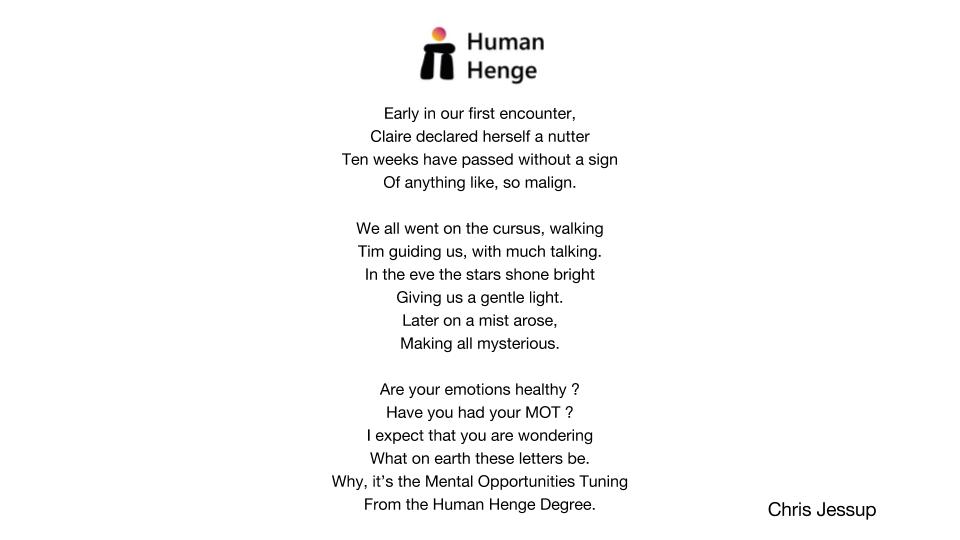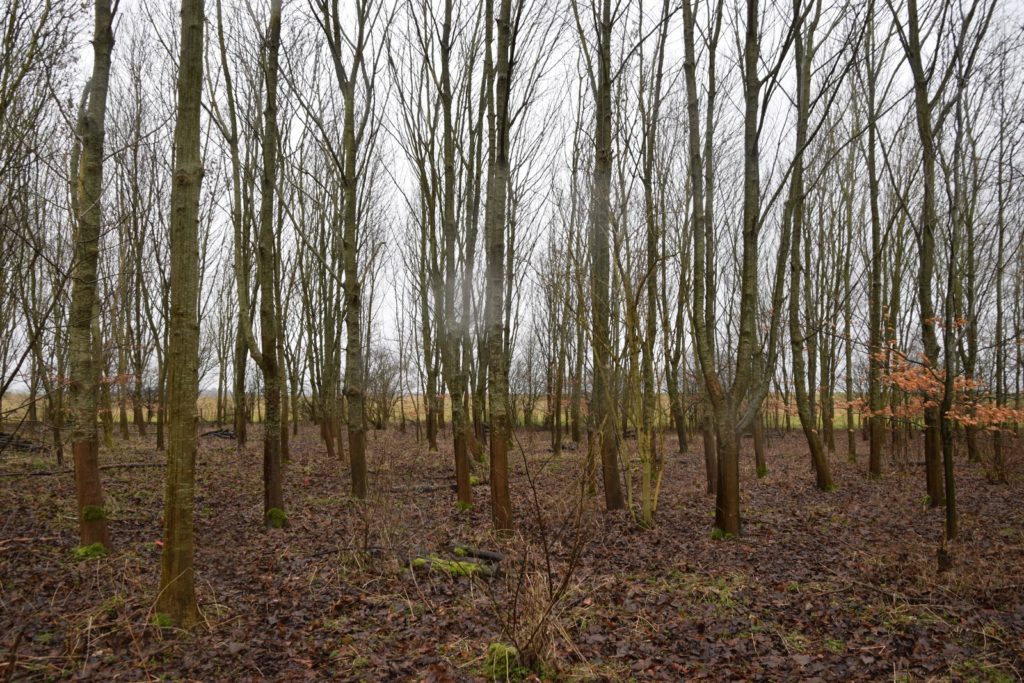Laura Drsydale, Director, Restoration Trust

There are these moments in time and space, these conjunctions, when ideas coalesce, and I wonder if TAG 2017 is one of them. Where we can talk about health, psychogeographies, forgetting, time, memory, poetry and place, and have a sense of resonance and reciprocity across our overlapping interests.
But I am at the end before the beginning, since resonance and reciprocity are words from the vocabulary of group analysis, to which I will come later.
I was at the session on archaeology and mental health at TAG 2015, when we were developing Human Henge. I watched the YouTube video of Dr Rathouse’s talk last night, and it reminded me how helpful the papers and conversations were to our thinking. This is a shared endeavor, so as a non-archaeologist, thank you TAG.
Now, I will tell you something about the Restoration Trust. We are a small charity that supports people to engage with heritage, art and culture so that their mental health improves. We call this culture therapy. We are usually producers – we broker partnerships, develop projects, find the money and manage the project.
Our current heritage foci are archaeology and the historic landscape, and archives. Why? Well, it’s partly pragmatic – availability and a culture of public entitlement to information in both arenas. But it is also because both archives and archaeology have a delicious tension between the quest for knowledge and the impossibility of total success in that quest. It is there, in the space between knowing and not knowing that our projects make a difference, for there is where imagination lives. More of that later too.
Heritage and mental health are certainly politically congruent at the moment. Mental health demand is rising, services are shrinking. National and local government need new ways to help people with their mental health, so all the various organs of the state, including lottery distributors, are on the case. Arts are front runners, for example with the report Creative Health published by the All Party Parliamentary Group on Arts and Health. Museums are catching up through the work of Professor Helen Chatterjee and her colleagues, but the wider heritage lags behind, it lacks a champion. Yet here it is, all around us, visible, hidden or intangible; and the thought of therapeutic landscapes lies deep within us.
Our two current landscape projects are Human Henge at Stonehenge and now at Avebury, and Burgh Castle Almanac at Burgh Castle roman fort in Norfolk. Both projects are largely HLF funded. Burgh Castle Almanac kicks off properly in January. It is a year-long 24-session programme – that happens two years running – of walking, talking and making at the Castle, and at Time and Tide Museum in Great Yarmouth. Norfolk Archaeological Trust is the lead partner.
Human Henge you will hear about from Professor Darvill and Dr Heaslip, and I hope also from members who are here at TAG. Briefly, it is a programme of 10 weekly walks for a facilitated group accompanied by archaeologists and musicians. Pilot 1 ran from October to December 2016, Pilot 2 from January to March 2017. In January we will run Pilot 3 at Avebury, to see how a different site impacts on the process. There is masses of information about Human Henge online at www.humanhenge.org
I would like to pay tribute to the whole astonishing network of participants, support workers, volunteers, board members, funders, partners, experts, creatives, researchers and staff who are the project; they, along with the sites, the collections, the weather, the administration, the biscuits, make up the Human Henge matrix, to use group terminology once more.

Both Human Henge and Burgh Castle Almanac meet our Criteria for Success, listed on the slide.
Let’s take one of these – Groupwork is the core.
Foulkes[1] described what happens when a collection of individuals meets routinely together with someone he named a conductor:
“They will begin to live, feel, think, act and talk more in terms of ‘we’ than in terms of ‘I’, ‘you’, and he’. At the same time, and I want to stress this point, the individuals do not become submerged but, on the contrary, show up their personal characteristics more and more distinctly within the dynamic interplay of an ever‐changing and often highly dramatic scene. As soon as this little sample community shows signs of organization and structure in the way described, we will call it a group.”
This is what we are trying to achieve in Human Henge.
So over 10 weeks of sustained and regular involvement within a context of safe frameworks and practice, and with expert facilitation, in this case from Yvette Staelens with Daniel O’Donoghue, a group begins to form. How does a historic landscape help? Or rather how does being in a historic landscape in the company of people who know a lot about it help? Because that is one of our criteria – privileged access to real cultural assets AND expertise.
It is only human to be in nature, to use our bodies and minds, to connect with each other, to be creative. And it is certainly better than some of the alternatives, such as loneliness, boredom and sadness. But why the historic bit?
It is not a universal prescription, for strange as it may seem, not everyone is interested in the past! But for those who are, and who can find the strength to face the daunting prospect of a project like Human Henge, historic landscapes are one way to face down mental illness’s erosion of the self.
Mental illness attacks space. For example it fills mental space with futile rumination or terrifying psychosis, or it negates it with a horrible combination of restlessness and passivity in depression. It makes space malignant so that it cannot be traversed to connect with others. It compromises time as it telescopes the past into the present with all-consuming flashbacks. Without space to think, to act, nothing creative can happen, there can be no imagination, no relating. A group experience of a historic landscape illuminated by people who know about it open ups multiple vistas of temporal, topographical and psychological space. It is a short cut to the imagination.
When people feel safe enough to take the enormous risk of embarking on a journey in both time and space, taking part in a strange wellbeing experiment in some fields, albeit fields that are among the most famous on the planet, with people they have never met, that’s when they may do things they never thought possible. It is when, hopefully, they can enjoy the richness of their own humanity.
I will leave you with this poem by Chris Jessup.

[1] S. H. FOULKES (1946) “ON GROUP ANALYSIS” Originally published in the International Journal of Psychoanalysis, 27:46‐51, 1946. Later in a shortened version in Selected Papers: Psychoanalysis and Group Analysis, pp. 137‐144, eds. M. Pines y E. Foulkes, Karnac Books, Londres: 1990.




